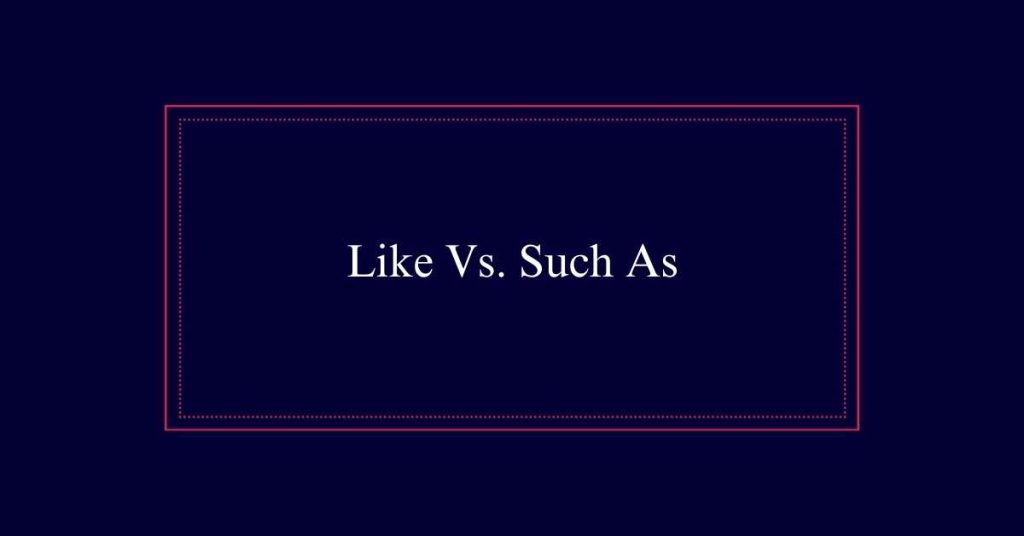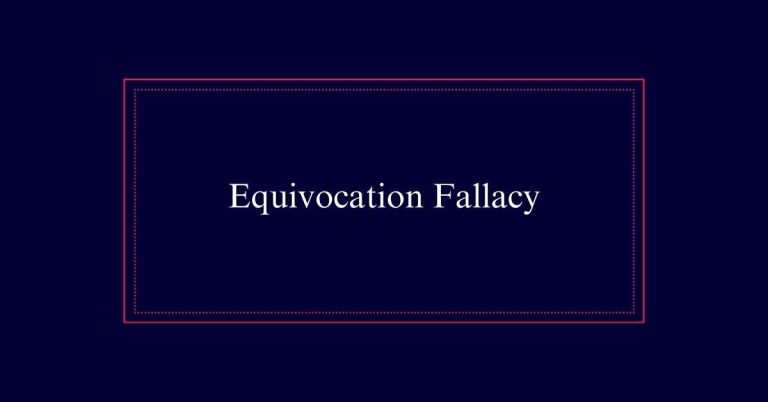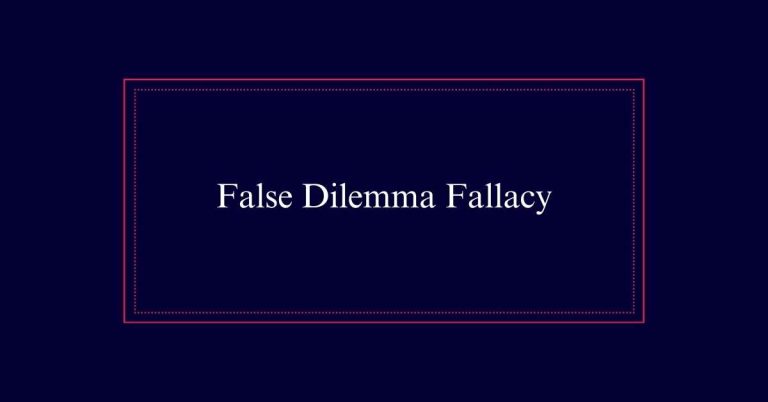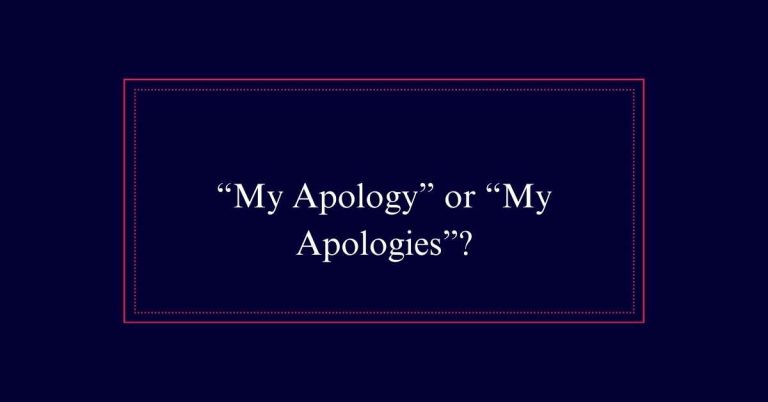Like Vs. Such As
Use “like” to draw comparisons and establish frames of reference. For example, “She dances like a professional” uses “like” to compare the way she dances to that of a professional dancer. Use “such as” to provide specific examples that clarify a statement. For example, “She enjoys activities such as hiking and swimming” uses “such as” to give concrete examples of activities.
Understanding “Like”
Understanding ‘like,’ we recognize it as a tool for making comparisons and establishing frames of reference.
For instance, ‘Jane appreciates film noir movies like ‘Double Indemnity’ and ‘The Maltese Falcon.” Here, ‘like’ compares Jane’s preference to specific films.
Another common use is through similes, which draw comparisons between two different things, such as ‘Life is like a box of chocolates.’ This construction highlights similarities and helps to describe one thing by drawing comparisons to another.
The use of ‘like’ is central to making analogies, which can clarify thoughts and add vivid imagery to writing. By recognizing its role, we can effectively use ‘like’ to draw parallels and create clear, relatable sentences.
Understanding “Such As”
While ‘like’ helps us make comparisons, ‘such as’ serves to give specific examples and clarify statements.
When using ‘such as,’ you introduce particular instances to illustrate a broader category. For example, ‘He’s read books such as ‘Sula’ and ‘Song of Solomon’ by Toni Morrison’ explicitly names books that fit into a larger group of literature. This term is particularly useful in writing to provide clear, concrete examples that support your point.
Additionally, ‘such as’ can enhance understanding by including detailed information. For instance, ‘Some plants, such as snake plants and aloe vera, prefer direct sunlight’ offers specific plant types that thrive in certain conditions.
Comparisons With “Like”
‘Like’ is primarily used to draw comparisons or establish a frame of reference between similar things. It functions to highlight similarities and resemblance in a straightforward manner.

For example, you might say, ‘Jane appreciates film noir movies like ‘Double Indemnity’ and ‘The Maltese Falcon.” Here, ‘like’ sets up a comparison between Jane’s taste and specific films.
In similes, ‘like’ is used to create vivid imagery and clear comparisons:
- ‘Life is like a box of chocolates.’
- ‘He runs like the wind.’
- ‘Her smile is like sunshine.’
These comparisons help paint a picture in the reader’s mind, making the expression more impactful.
Examples With “Such As”
‘Such as’ is used to provide specific examples that clarify or illustrate a point. It helps to give precise illustrations within a sentence.
For example, ‘He’s read books such as ‘Sula’ and ‘Song of Solomon’ by Toni Morrison,’ specifically names the books to clarify the statement.
Similarly, ‘Caine has competed in events such as the Pan American Games and the Olympics’ provides clear instances of the events mentioned.
Additionally, ‘They have hobbies such as birdwatching, kayaking, and trail running’ lists specific activities, making the sentence more informative.
Similes Using “Like”
Similes often employ the word ‘like’ to draw direct comparisons between two different things, creating vivid imagery and understanding. These comparisons help readers visualize concepts and emotions by linking them to familiar experiences. For example, using ‘like’ in similes can make abstract ideas more tangible.
In each case, ‘like’ bridges the gap between the subject and a relatable image, enhancing the reader’s comprehension and engagement.
- ‘Her smile was like sunshine, brightening up the room.’
- ‘He ran like the wind, swift and unstoppable.’
- ‘The night was as quiet as a mouse, with hardly a sound.’
Clarifying With “Such As”
When you want to provide specific examples to clarify a statement, using ‘such as’ is often the best choice. This phrase helps to specify and elaborate on a general idea.
For instance, instead of saying, ‘He enjoys reading books,’ you might say, ‘He enjoys reading books such as ‘Pride and Prejudice’ and ‘Moby Dick’.’ This gives a clearer picture of the types of books he likes.
‘Such as’ is particularly useful in making lists that give more detail.
For example, ‘She has traveled to many countries such as Italy, Japan, and Brazil.’ By using ‘such as,’ you offer precise examples that enhance understanding without ambiguity.
Flexible Usage Rules
Many writers find that the rules between ‘like’ and ‘such as’ can be quite flexible in practice. While traditional grammar guides suggest distinct uses for each term, modern writing often shows more relaxed boundaries. This flexibility allows for creative expression and adaptability in various contexts.
Here are key points to take into account:
- ‘Like’ is typically used for comparisons, but can also introduce examples informally.
- ‘Such as’ is preferred when listing specific examples, adding clarity and detail.
- Context and sentence flow often determine the choice between ‘like’ and ‘such as’.
Sentence Flow Considerations
Understanding the flexibility between ‘like’ and ‘such as’ leads us to contemplate how sentence flow can influence the choice between these terms.
‘Like’ often provides a smoother, more conversational tone. It is ideal when making quick comparisons without breaking the sentence’s rhythm. For example, ‘She enjoys exotic fruits like mangoes and papayas’ flows naturally.
On the other hand, ‘such as’ can add clarity and formality, offering specific examples that fit well in more detailed or explanatory texts. An example would be, ‘She enjoys exotic fruits such as mangoes and papayas.’
Comma Usage Guidelines
Comma usage in sentences with ‘like’ and ‘such as’ hinges on whether the clause is restrictive or nonrestrictive. A comma is required before ‘such as’ in nonrestrictive clauses, as these add extra information that isn’t crucial to the sentence’s meaning.
On the other hand, no comma is needed in restrictive clauses, which provide essential information.
- Nonrestrictive clause: Some plants, such as snake plants and aloe vera, prefer direct sunlight.
- Restrictive clause: Foods such as honey and canned beans can last in your pantry.
- Using ‘like’: No comma is typically needed before ‘like,’ as it often introduces a restrictive clause: He enjoys sports like basketball and soccer.
Real-World Examples
In various contexts, the correct usage of ‘like’ and ‘such as’ can greatly enhance the clarity of your writing. For instance, consider the following real-world examples:
| Situation | Like | Such As |
|---|---|---|
| Fruits | Juicy fruits like dragon fruit and mango | Tropical fruits such as papaya and guava |
| Cities | Smaller cities like Austin and Boulder | Cities such as San Francisco and Seattle |
| Awards | Prizes like the Pulitzer and Booker | Awards such as the Nobel and Grammy |







